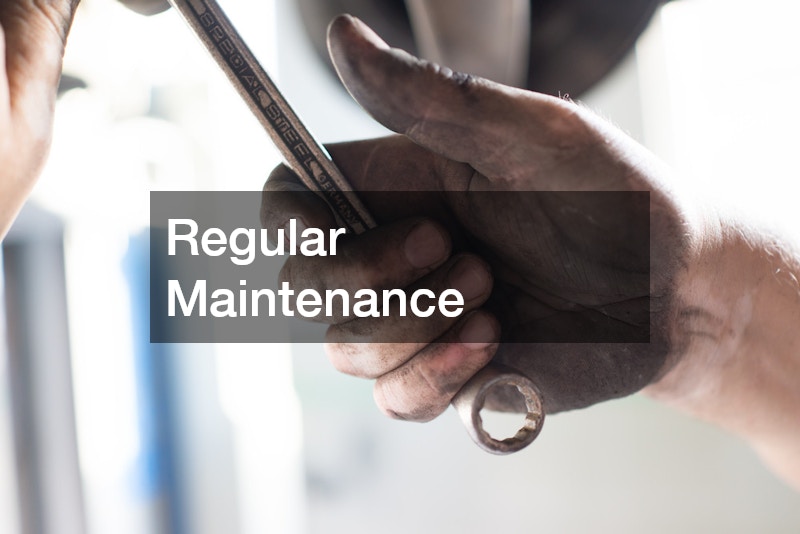
When it comes to transporting goods, whether for personal or business purposes, trailer utility is an essential aspect of logistics that can greatly enhance your moving capabilities. The versatility of various trailer types, such as the bumper pull cargo trailer or cooler trailer, offers solutions tailored to your specific hauling needs. Understanding the complexities involved in trailer usage, such as proper load distribution and secure tie-downs, ensures not only safety but also the longevity of your equipment.
This extensive guide aims to dive deep into the considerations that must be made for optimal trailer utility. From understanding weight limits to mastering the art of maneuvering, each component plays a critical role in ensuring a successful transport experience. Moreover, maintaining your trailer’s health through regular alignment and wheel checks will prevent costly repairs down the line.
Regardless if you’re a seasoned hauler or a novice navigating local trailer towing services, the knowledge you gain here will empower you to make informed decisions. As we explore each facet in detail, you’ll find actionable tips that can be immediately applied, whether you’re using a cargo trailer for business or simply renting a cooler trailer for a weekend event. Embark on this journey to mastering your trailer utility needs.
Load Distribution

Achieving proper load distribution is critical for maintaining trailer utility and ensuring a safe journey. A bumper pull cargo trailer, for example, can easily sway if the weight isn’t balanced, leading to potentially hazardous situations on the road. It’s important to distribute weight evenly from side to side and keep about 60% of the load concentrated toward the front half of the trailer for optimal stability.
Inadequate load distribution can have dire consequences, such as increased wear on trailer tire and wheels, which can lead to premature replacement costs. The way cargo is placed in a trailer utility impacts braking efficiency and handling stability. Thus, deliberate organizing and conscientious weight placement are essential practices. Strategies like using specialized load bars or ratchet straps can help keep your items securely in place.
Unstable loads not only amplify risks on the highway but also compromise the life of your vehicle’s hitch connections and trailer alignment. To avoid such pitfalls, regular practice with varying load compositions will aid you in achieving perfect distribution over time. By mastering these techniques, you ensure your next haul is both efficient and secure.
Tie-Downs
Secure tie-downs are a cornerstone of reliable trailer utility, crucial for ensuring that your cargo arrives intact and undisturbed. Mobile storage trailers frequently transport valuable items that require secure tie-down methods to avoid damage. Employing high-quality ratchet straps and chains helps prevent spills and shifts that could disrupt weight balance and cause accidents.
Utilizing multiple tie-down points achieves a balance that distributes force and minimizes motion during transport. This can be especially pertinent if you’re using a trailer rental service, where the unfamiliar load dynamics call for extra caution. The quality of your tie-downs reflects directly on the condition of the materials upon arrival.
Innovative solutions such as E-track systems widely enhance trailer utility by providing customizable tie-down options for various cargo sizes. With these systems in place, drivers can swiftly adjust strap positions to accommodate diverse loads securely. Always double-check your tie-downs for wear and tear, and replace them if necessary to maintain impeccable safety standards.
Weight Limits
Understanding and adhering to weight limits is crucial in leveraging trailer utility effectively while remaining compliant with safety regulations. Each cargo trailer comes with its own Gross Vehicle Weight Rating (GVWR), which outlines the maximum allowable weight for the trailer, cargo, and additional equipment. Surpassing these limits can lead to dangerous situations such as tire blowouts or mechanical failures during transit.
Operators must familiarize themselves with the specific weight capacities of their equipment to prevent overloading. The allowance for trailers often differs based on axle count and size, and exceeding these can invalidate insurance claims in case of accidents. It’s advisable to routinely measure cargo weight to ensure compliance with both trailer design limits and roadway regulations.
Following weight regulations not only protects the trailer’s structural integrity but also enhances fuel efficiency. A well-laden trailer utility scenario contributes to reduced strain on both vehicle and trailer alignment, ensuring longer service life without unnecessary repair expenses. For hauling heavy loads, consider consulting a professional or using a local tractor trailer towing service when in doubt about weight constraints.
Organization
Effective organization within your trailer can significantly enhance its utility, making the difference between a smooth operation and a chaotic unloading experience. For instance, arranging a cooler trailer for an event requires segregating different temperature-sensitive goods to prevent spoilage. Therefore, strategic placement of items according to priority will ensure quick access and long-term preservation during transport.
Implementing storage solutions such as shelves, racks, and modular bins maximizes the use of vertical space while keeping everything tidy. This method minimizes movement that could disrupt weight balance and potentially lead to mishaps. Investing in quality organization systems boosts trailer utility by improving accessibility and efficient use of space.
For those using trailer utility for professional purposes, maintaining an inventory list at all times facilitates easier logistics management. When combined with clearly marked sections, it can speed up loading and unloading, minimizing downtime and increasing productivity. Regular re-evaluation of your loading process can offer new insights into improving organization, benefiting your operational efficiency substantially.
Maneuvering

Maneuvering a utility trailer demands skill and experience, especially when navigating tight spaces or complex terrains. Unlike ordinary vehicles, trailers extend your vehicle’s actual length and have unique pivot points, making turning challenging. To master the art of trailer utility, it’s important to familiarize yourself with your vehicle’s turning radius while considering the extra dimensions your trailer adds.
Practicing the maneuvering of trailers in empty parking lots provides invaluable experience in handling real-world challenges. Understanding how the trailer reacts to movements initiated by your vehicle is essential to prevent potential jackknifing incidents. Professional driving courses are often recommended to refine these skills further, especially for beginners or someone new to using a bumper pull cargo trailer.
Moreover, backward navigation is a skill that once mastered, enhances your overall trailer utility and confidence. It’s prudent to use visual aids like side mirrors or backup cameras, and having a spotter assist provides added safety. These precautions contribute significantly to avoiding accidents and preserving the condition of your trailer and vehicle alike.
Wheel Chocks
Stability is paramount when parking your trailer utility, and wheel chocks are an indispensable tool in achieving this. Placing wheel chocks behind trailer tire and wheels prevents unwanted movement that could damage your vehicle or pose safety hazards. Whether you’re on a slope or flat terrain, chocking your wheels should always be a part of your parking routine.
The choice of wheel chocks should match the trailer’s weight and wheel size, providing a snug fit that resists movement effectively. Different materials, from rubber to metal, offer varying durability and grip levels, and selecting the appropriate type enhances trailer stability. It’s essential to check chock conditions regularly to ensure they remain in prime function.
Integrating chocks with other parking aids, like trailer stabilizing jacks, improves overall security during storage or maintenance. They serve as the first line of defense in preventing trailer drift, especially in environments subject to harsh weather conditions. By investing in quality wheel chocks, you protect both your cargo and investment by ensuring your trailer stays precisely where you leave it.
The Right Hitch
Selecting the right hitch for your trailers is crucial in maximizing their utility potential while safeguarding your towing vehicle. Different types of hitches offer varied benefits and suitability, dictated by the weight class of your trailer and towing demands. For heavy-duty needs, a fifth wheel hitch might be necessary, but for a smaller utility trailer, a bumper pull option could suffice.
Compatibility between vehicle, hitch, and trailer ensures alignment in towing dynamics, reducing stress on connection points and enhancing safety. It’s essential to consult manufacturer guidelines and possibly a professional to verify that your setup is optimal for your hauling needs. Proper hitch maintenance includes regular lubrication and inspection for rust or damage, keeping your towing endeavors efficient and secure.
The use of weight distribution systems further optimizes trailer utility by spreading tongue weight across axles, which stabilizes both vehicle and trailer. This leads to a smoother ride and less strain on the vehicle’s suspension, enhancing fuel efficiency. Always double-check hitch locks before hitting the road to ensure unwavering security in your towing configuration.
Regular Maintenance

Consistent maintenance is a cornerstone of trailer utility, ensuring the reliability and safety of your equipment. Regular trailer alignment checks prevent uneven tire wear, which could lead to costly replacements and potential safety hazards. Alignment issues often manifest as swaying or pulling, which disrupts hauling efficiency and comfort.
Electrical systems, including lighting and brake operations, should be routinely inspected to avoid accidents due to malfunctioning indicators. Maintenance also extends to the structural components, where inspecting welded joints, metal rust, and overall integrity can prevent catastrophic failures. Regular checks prolong the trailer’s lifespan, maintaining it in peak condition for every journey.
Keeping a maintenance schedule logged helps organize and prioritize essential checks, encouraging timely fixes rather than costly reactive repairs. It’s beneficial to work with a trusted mechanic or service provider familiar with trailers to refine maintenance practices. Regular upkeep enhances trailer utility, ensuring it remains an asset rather than a liability.
Stay Within Speed Limits
Adhering to speed limits when operating a trailer utility is vital for ensuring safety and compliance with traffic laws. Trailers, including local tractor trailer towing arrangements, alter a vehicle’s aerodynamic profile and braking distance. High speeds increase stress on the trailer and its components, exacerbating risks of accidents and equipment damage.
Speeding aggravates sway, where trailers begin to fishtail, which is particularly prevalent in bumper pull cargo trailers due to their hitch positioning. Experienced drivers will tell you that moderation in speed allows for better control and responsive handling of both vehicle and trailer. Staying within limits optimizes fuel economy, saving costs over extended trips.
Planning your route with foresight on speed limits and alternate paths can help maintain a steady pace without rush. Reducing sudden speed changes minimizes stress on connections and maximizes trailer utility by preserving component lifespan and lowering repair frequencies. Always consult local speed regulations, as trailer hauling speeds often differ from standard vehicle limits.
Weather Protection

Weather protection strategies significantly enhance trailer utility by safeguarding cargo from environmental elements during transport and storage. Trailer rental service users should be particularly vigilant about weatherproofing techniques, as fluctuating conditions can impact the rented equipment’s condition. Tarpaulins and quality covers act as effective shields against rain, snow, and harsh sunlight.
Ensuring the trailer’s seals and weather stripping are intact prevents moisture ingress that could damage sensitive electronics or perishable goods. Ventilation is another critical aspect, as improper airflow could lead to overheating or condensation build-up inside closed spaces like mobile storage trailers. Weather-induced corrosion can severely undermine trailers’ structural integrity if left unchecked.
Long-term storage requires more elaborate weatherproofing, such as applying corrosion inhibitors to metal components and periodic inspections. Equipment like dehumidifiers balances internal humidity levels, mitigating mildew and keeping cargo fresh. Diligent weather protection practices transform potential risks into controlled variables, maintaining optimal conditions for your trailer’s endeavors year-round.
Conclusion
Optimizing your trailer utility involves multifaceted strategies, each contributing to a seamless and efficient transportation experience. By mastering load distribution, utilizing secure tie-downs, and respecting weight limits, you lay a solid foundation for safe and effective hauling. Understanding the nuances of trailer organization and maneuvering skills further empowers you to tackle challenging logistics with confidence.
Regular maintenance practices, coupled with adhering to speed regulations and appropriate weather protection, ensure the longevity and reliability of your trailers. The commitment to understanding each component’s role and maintaining high standards in execution elevates trailer utility from mere transport tools to indispensable assets in your logistics arsenal.
Whether utilizing a bumper pull cargo trailer for business or a rented cooler trailer for personal events, informed decisions and proactive measures consolidate efficiency and safety. Each journey builds upon the last, refining skills and practices that lead to consistent improvements in trailer utility. With the knowledge imparted by this guide, your ventures in transporting goods can achieve unparalleled success.




